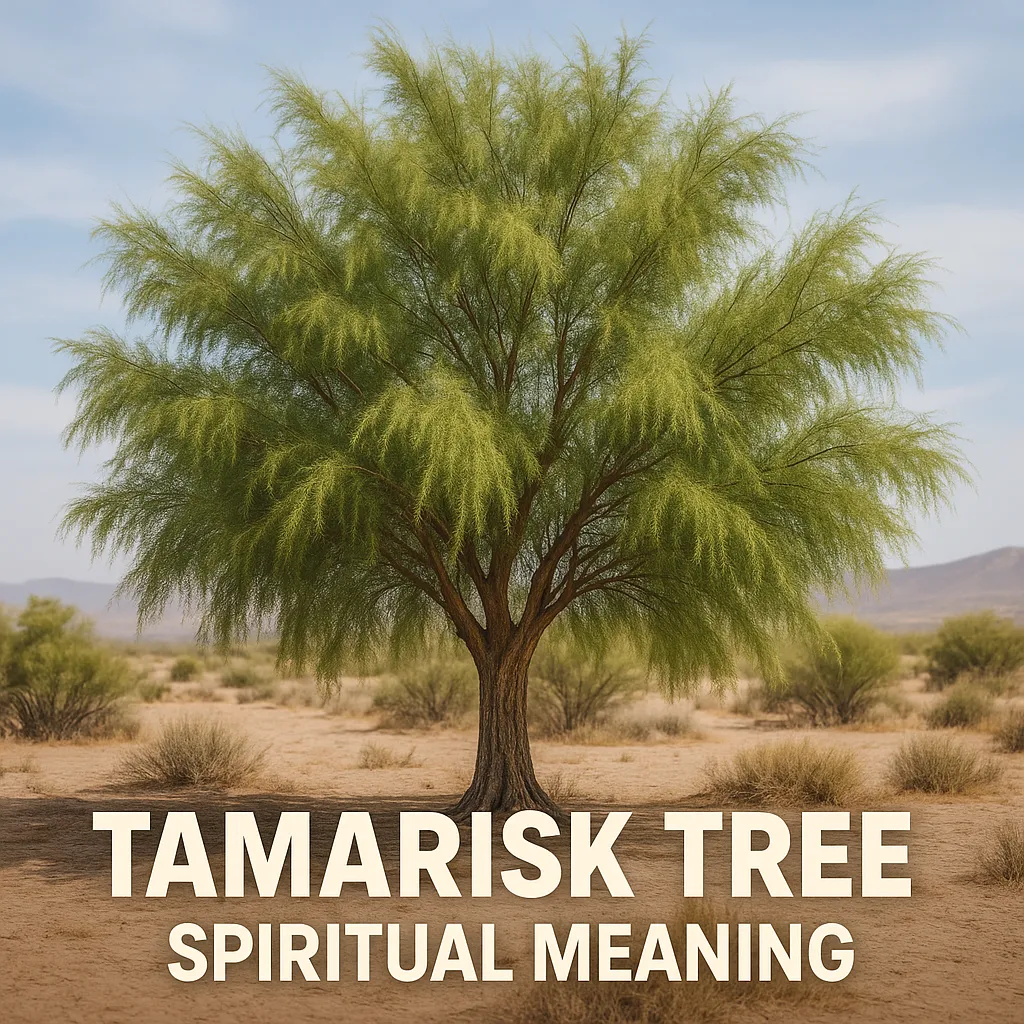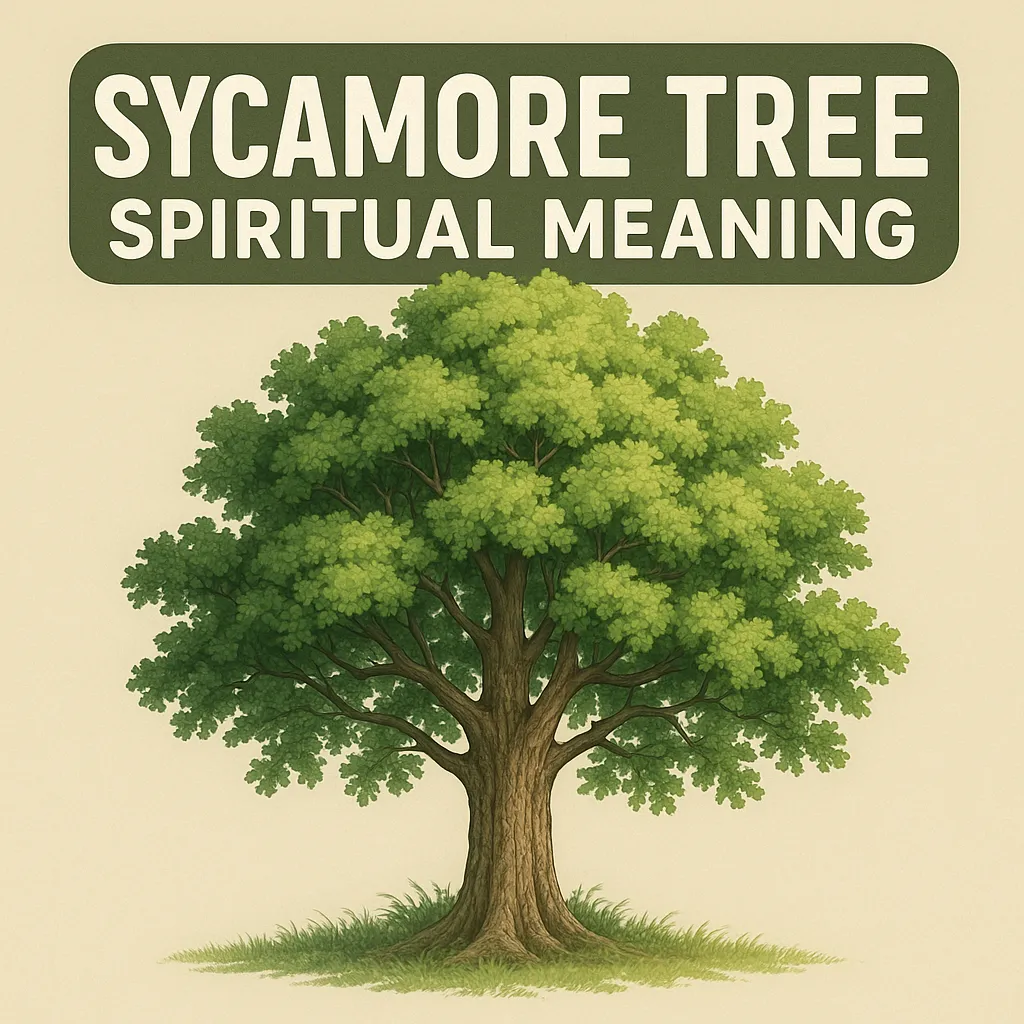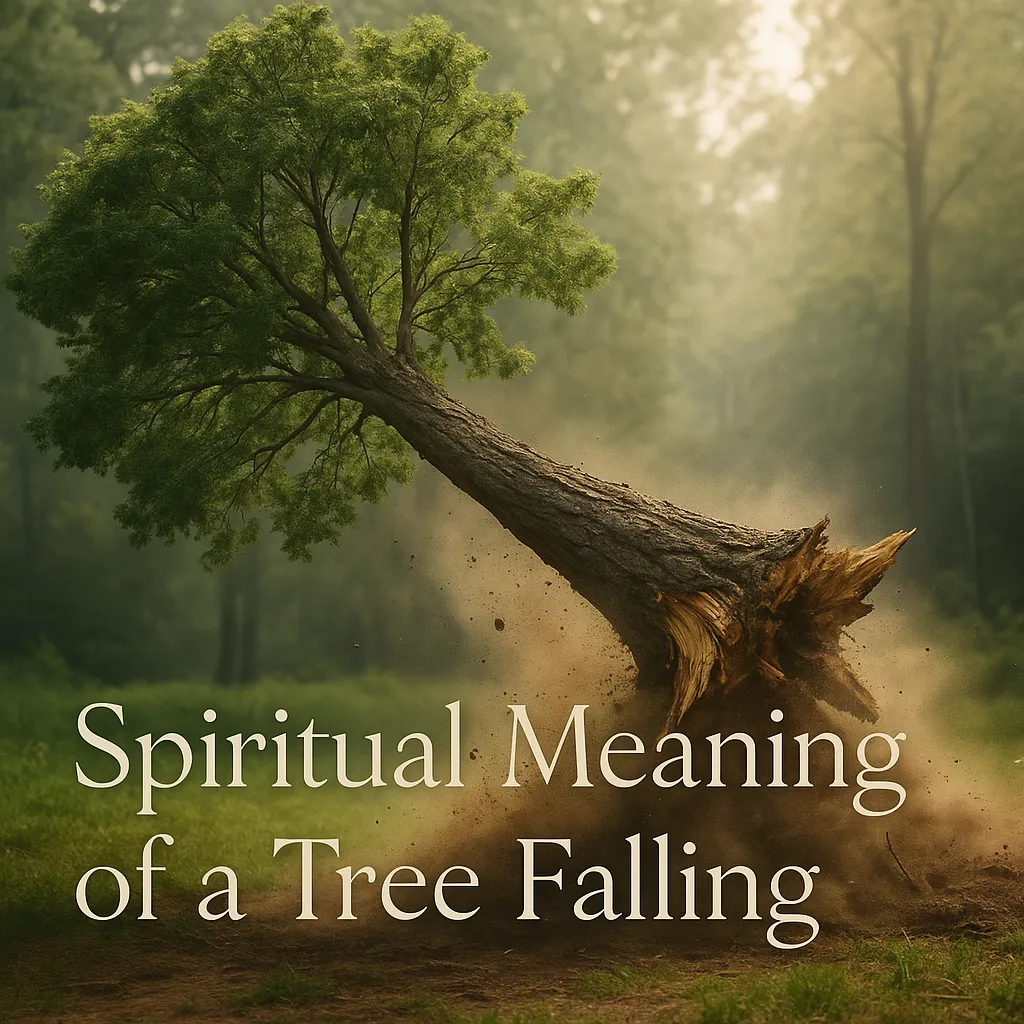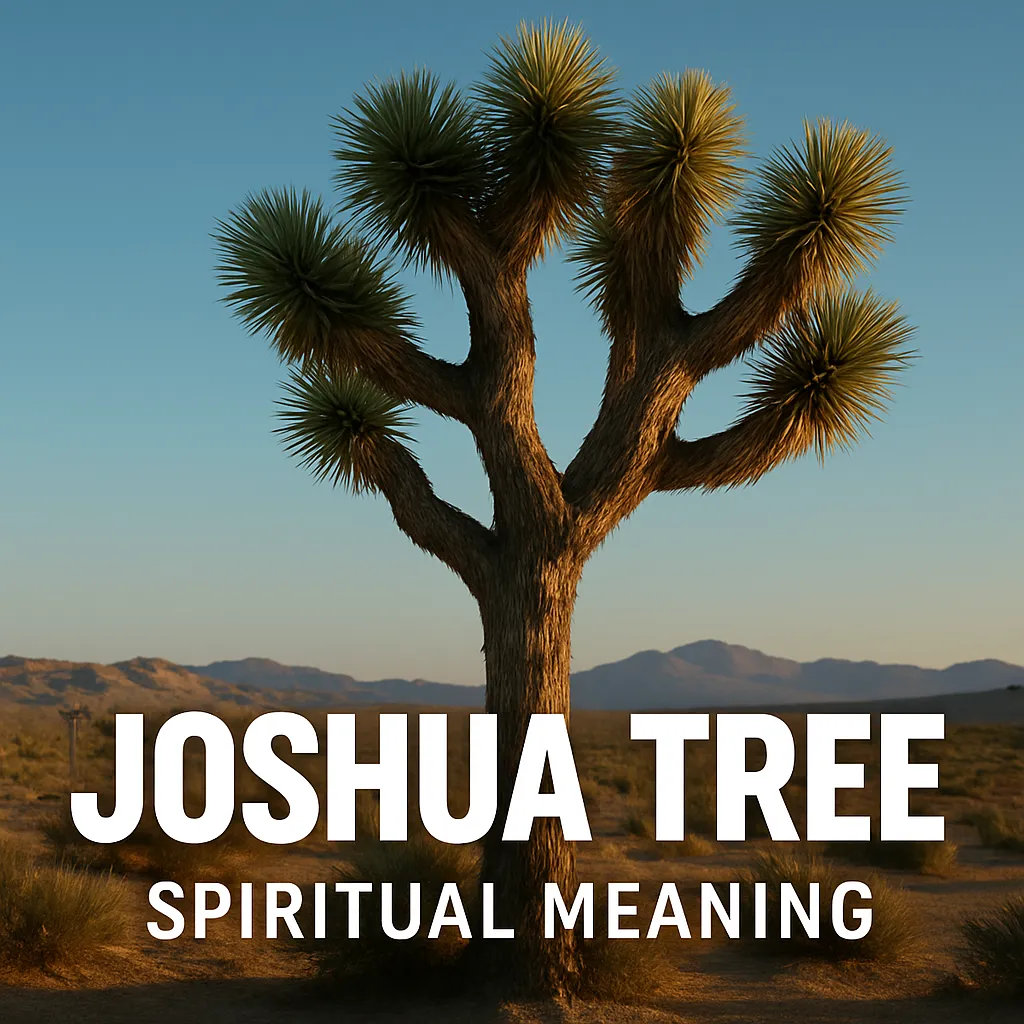In the ancient sands of time, certain trees have stood as silent witnesses to humanity’s spiritual journey. Among these sacred sentinels, the tamarisk tree emerges as a profound symbol of enduring faith and divine covenant. With its feathery branches dancing in desert winds, this remarkable tree has thrived in the harshest conditions while offering precious shade to weary travelers for millennia.
The tamarisk tree’s spiritual meaning runs deeper than its roots, particularly in Hebrew tradition where Abraham planted this tree at Beersheba, marking a sacred covenant with the eternal divine. What wisdom might this ancient tree, with its extraordinary tamarisk tree lifespan spanning centuries, offer to our modern spiritual paths? Perhaps in its quiet resilience and steadfast presence, the tamarisk whispers timeless truths about faith, endurance, and finding sacred space in life’s harshest landscapes.
Table of Contents
- 1 Key Takeaways
- 2 The Tamarisk Tree: Botanical Understanding
- 3 Biblical Significance: The Tamarisk in Sacred Texts
- 4 Abraham’s Tamarisk: Covenant and Eternal Promise
- 5 Symbolism of Resilience: Spiritual Endurance
- 6 Cross-Cultural Perspectives on the Tamarisk
- 7 The Tamarisk as Sacred Space: Creating Sanctuary
- 8 Ritual and Practical Applications
- 9 The Tamarisk and Eternal Life Symbolism
- 10 Modern Significance: The Tamarisk Tree Today
- 11 Personal Reflection: Finding Your Tamarisk
- 12 Conclusion
- 13 FAQ
- 13.1 What is the meaning of tamarisk tree in Hebrew?
- 13.2 What are tamarisk tree fruits like?
- 13.3 What are the tamarisk tree benefits?
- 13.4 What is special about a tamarisk tree?
- 13.5 Where can I find tamarisk tree photos?
- 13.6 How long is the tamarisk tree lifespan?
- 13.7 What is the significance of the tamarisk tree at Jabesh?
- 13.8 Why did Abraham plant a tamarisk tree?
- 14 Sources
Key Takeaways
- The tamarisk tree symbolizes divine covenant and eternal promises, most notably through Abraham’s act of planting one at Beersheba.
- In Hebrew tradition, the word “eshel” (tamarisk) represents hospitality and sanctuary, teaching us about creating sacred space in our lives.
- The tamarisk’s ability to thrive in harsh conditions serves as a powerful metaphor for spiritual resilience and finding strength during difficult times.
- Across multiple spiritual traditions, from Biblical texts to Egyptian mythology, the tamarisk represents immortality and transcendence.
- The practical benefits of tamarisk trees mirror their spiritual significance—providing shade, purifying salt from soil, and offering medicine, just as they spiritually cleanse, protect, and heal.
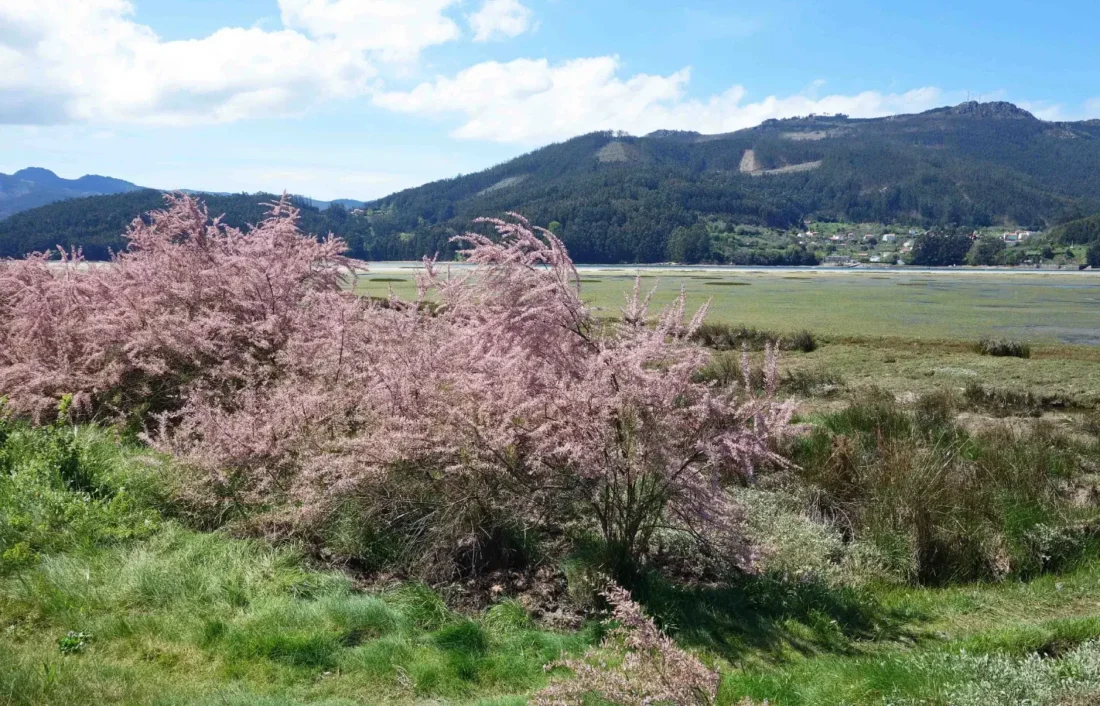
The Tamarisk Tree: Botanical Understanding
The tamarisk (Tamarix species) presents a study in botanical wonder and spiritual metaphor. These resilient trees reach heights of 15-60 feet with distinctive feathery foliage that appears scale-like, giving them an ethereal, almost otherworldly appearance. Native to arid regions spanning from the Mediterranean to Central Asia, tamarisks have adapted perfectly to thrive where other plants surrender to harsh conditions.
What makes the tamarisk truly remarkable is its extraordinary adaptability. These trees possess specialized glands that can extract salt from the soil, expelling it through their leaves—a rare capability that allows them to purify their surroundings while sustaining themselves. Their extensive root systems, sometimes extending over 100 feet, enable them to access deep groundwater sources, explaining their presence as green sentinels in otherwise barren landscapes.
The tamarisk tree lifespan can extend for decades to centuries, with some specimens living 150 years or more. During spring and summer, they produce delicate clusters of pink or white flowers that transform into tiny capsule tamarisk tree fruit containing feathery-haired seeds designed to travel on desert winds. This reproductive strategy—sending new life floating across vast distances—mirrors their spiritual symbolism of spreading divine covenant across generations.
Understanding these botanical characteristics provides essential context for appreciating why ancient cultures revered this tree. Its ability to create microhabitats of shade and relative humidity in desert environments made it not just spiritually significant but vital for survival, much like the mighty cedar tree in other landscapes. The tamarisk doesn’t merely survive in harsh conditions—it transforms them, pulling salt from earth, providing sanctuary, and demonstrating an unwavering presence across centuries.
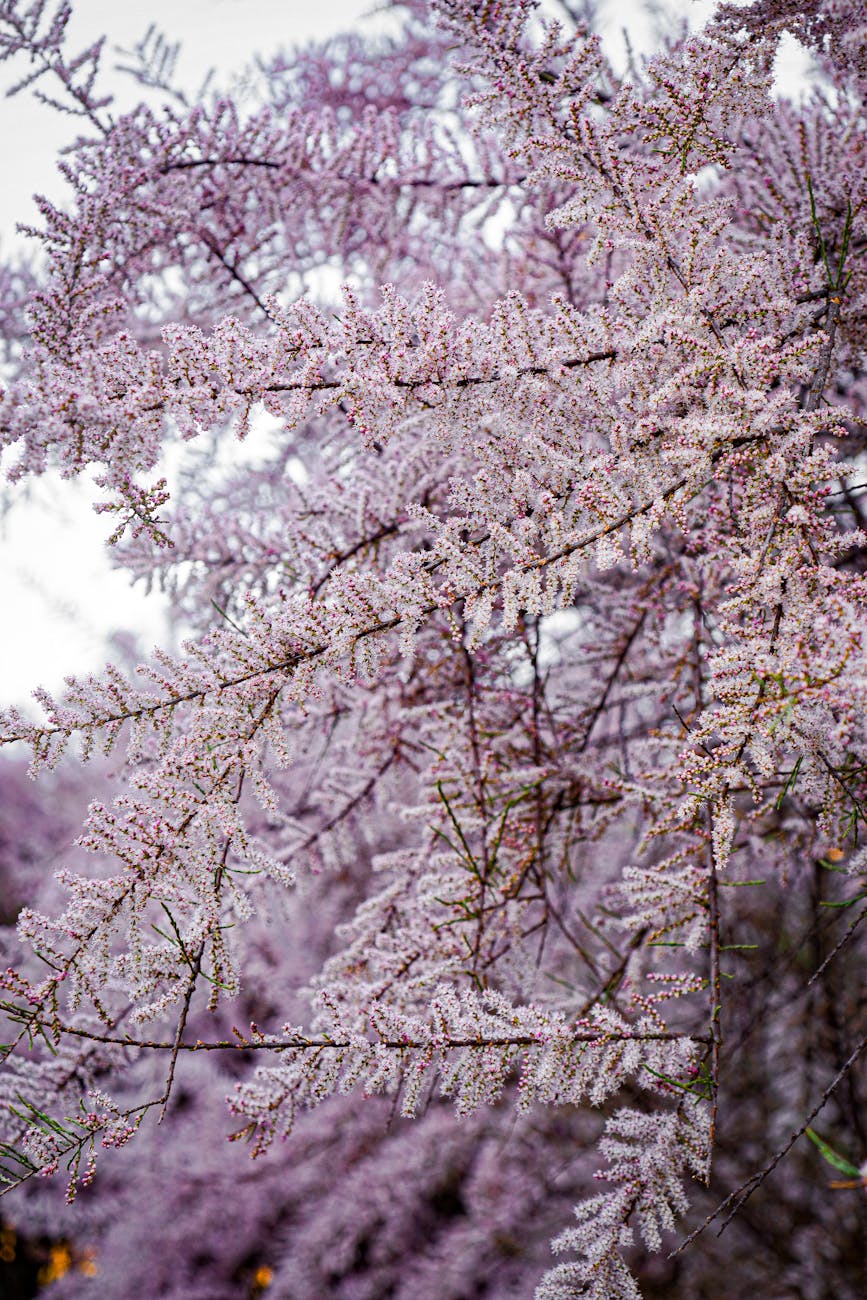
Biblical Significance: The Tamarisk in Sacred Texts
The tamarisk tree appears at pivotal moments in biblical narratives, each instance layered with spiritual significance. In Genesis 21:33, we find perhaps the most profound reference: “Abraham planted a tamarisk tree in Beersheba, and there he called on the name of the Lord, the Eternal God.” This seemingly simple act carries immense theological weight—Abraham doesn’t merely rest under the tree’s shade but actively plants it, establishing a living symbol of his covenant with the divine.
The meaning of tamarisk tree in Hebrew traditions expands this significance. The Hebrew word used here is “eshel” (אשל), which some rabbinical commentaries suggest could be an acronym for food (ochel), drink (shtiyah), and lodging (linah)—representing Abraham’s legendary hospitality. This interpretation frames the tamarisk not just as a tree but as the embodiment of sacred welcome and generosity.
Later biblical references deepen the tamarisk’s symbolism. In 1 Samuel 22:6, we find King Saul “sitting under a tamarisk tree on the height” while holding his spear—a scene that juxtaposes the tree’s association with covenant against Saul’s declining relationship with God. Most poignantly, in 1 Samuel 31:13, we read that after Saul’s death, his bones were buried “under the tamarisk tree at Jabesh.” This burial choice wasn’t incidental but reflected an understanding of the tamarisk as a marker of sacred space and remembrance.
These scriptural moments reveal why the biblical writers specifically mentioned this tree rather than any other. The tamarisk stands as a living symbol of spiritual continuity, much like the willow tree represents in other contexts. It marks places where heaven and earth meet, where covenants are established, and where remembrance is honored. In each reference, the tamarisk doesn’t merely provide setting—it amplifies the spiritual significance of human actions unfolding beneath its branches.

Abraham’s Tamarisk: Covenant and Eternal Promise
The question of why did Abraham plant a tamarisk tree at Beersheba reaches to the heart of spiritual symbolism. This wasn’t a casual act of gardening but a profound statement of faith. Abraham, having just made a covenant with Abimelech securing rights to a well, plants this long-lived tree as a living testimony to something far more significant—his eternal covenant with God.
Jewish midrashic tradition enriches our understanding of this moment. The Midrash suggests that Abraham’s tamarisk performed miraculous functions—providing not just shade but protection from spiritual darkness. Some commentaries propose that the tree’s canopy created a spiritual portal where travelers could encounter divine presence. Rabbi Shimon bar Yochai taught that Abraham’s tamarisk had unique properties—its fruits granted knowledge of one’s relationship with the divine, making tangible the abstract concept of covenant.
The symbolic timing cannot be overlooked. Abraham plants the tamarisk after years of nomadic wandering, marking his first established dwelling place. By choosing a tree known for its exceptional longevity, Abraham makes a statement about the enduring nature of his faith. Unlike temporary tents or even stone structures, the living tree would continue growing long after his death—a biological testament to promises extending beyond a single lifetime.
Abraham’s action gains even deeper significance when we consider that he “called upon the name of the Lord, the Everlasting God” after planting the tree. The Hebrew text uses the divine name “El Olam” (God Eternal)—the first biblical use of this particular name for God. The pairing of the everlasting divine name with the planting of a long-lived tree creates a powerful metaphor for eternal promises, reminiscent of how oak trees symbolize endurance in many traditions. Abraham wasn’t just marking territory—he was creating a living altar that would continue his invocation long after his voice fell silent.
Symbolism of Resilience: Spiritual Endurance
The tamarisk tree embodies spiritual resilience in its very biology. Unlike trees that require ideal conditions, tamarisks thrive in places that would kill most vegetation—salt-laden soils, drought-stricken lands, and extreme temperature fluctuations. This extraordinary adaptability makes the tamarisk a perfect natural metaphor for spiritual perseverance through adversity.
Perhaps most remarkable is the tamarisk’s relationship with salt. Rather than being poisoned by saline soil, these trees actively extract salt through specialized glands and release it through their leaves. This biological process mirrors a profound spiritual teaching: the ability to transform poison into purification. Like the tamarisk, the resilient spirit doesn’t merely endure toxic circumstances but actively processes them, releasing their harmful essence and continuing to grow.
The tree’s deep root system offers another dimension of this symbolism. Tamarisks send roots down extraordinary distances to find water, teaching us about the importance of remaining connected to our spiritual source even when the surface world appears barren. This quality explains what is special about a tamarisk tree in spiritual contexts—it demonstrates faith not as abstract belief but as active seeking, reaching through darkness toward life-giving truths.
In many spiritual traditions, difficult environments aren’t viewed as punishment but as the necessary ground for developing spiritual strength. The tamarisk reminds us that hardship often becomes the catalyst for our deepest growth. Just as desert winds strengthen the tamarisk’s trunk through constant resistance, our spiritual challenges can develop inner fortitude impossible to gain in sheltered comfort. The tree stands as living proof that the harshest landscapes can nurture the most resilient life—a teaching particularly relevant in times of personal or collective struggle.
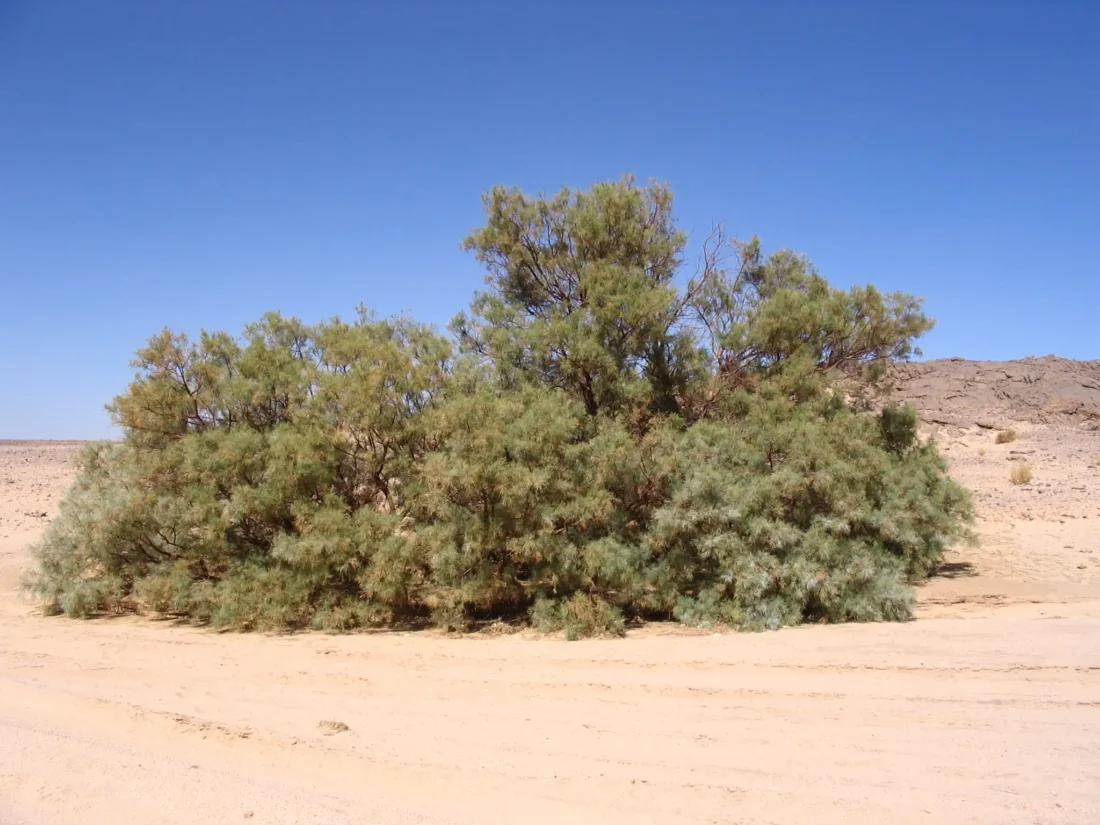
Cross-Cultural Perspectives on the Tamarisk
The tamarisk’s spiritual significance extends far beyond Biblical narratives, appearing across diverse traditions with remarkable symbolic consistency. In ancient Egyptian mythology, tamarisk trees held particular reverence in connection with Osiris, god of resurrection. According to the Osiris myth, when his coffin became enclosed in a tamarisk tree, the tree was cut down and used as a pillar in the palace of Byblos—symbolizing how death becomes transformed into supporting structure. The tamarisk thus became associated with life emerging from death, rebirth, and divine protection.
Greek mythology presents another fascinating connection through the story of Myrice, a young woman who was transformed into a tamarisk tree while fleeing unwanted advances from Apollo. This metamorphosis story reflects themes of divine preservation and sanctuary—the tamarisk becoming a living refuge for threatened innocence. This parallels the biblical use of tamarisk as markers of sacred, protected space.
In Sufi traditions, the tamarisk appears in teachings about divine presence in unlikely places. Sufi masters pointed to the tree’s ability to create green havens in deserts as evidence of Allah’s mercy manifesting even in apparently abandoned landscapes. The Quran (34:16) references “trees producing bitter fruit” which some commentators identify as tamarisks, using them to illustrate divine lessons about gratitude and the consequences of taking blessings for granted.
Hindu texts mention tamarisk-like trees as bridges between material and spiritual realms. In the Chaitanya Bhagavata, such trees create sanctified spaces where spiritual practices become more potent. This cross-cultural reverence reveals how the tamarisk’s natural properties—its resilience, shade-giving nature, and purifying qualities—inspired spiritual metaphors across traditions, similar to how the olive tree symbolizes peace and enlightenment across multiple cultures. Despite different theological frameworks, diverse traditions recognized in this remarkable tree a common language of spiritual transformation.
The Tamarisk as Sacred Space: Creating Sanctuary
The concept of sacred space—areas set apart for divine encounter—finds perfect expression in the tamarisk tree. In desert environments where shade means survival, the tamarisk creates literal oases, transforming scorching terrain into habitable sanctuary. This practical function mirrors the tree’s spiritual role as threshold between worlds—places where heaven and earth, material and divine, intersect.
Abraham’s act of planting a tamarisk and then invoking God beneath it established a pattern repeated throughout spiritual history: the marking of sacred space with living trees. Unlike human-made structures, trees represent ongoing creation—divine work continuing in real-time. The tamarisk’s ability to create its own microclimate—cooler, more humid, with filtered light—physically demonstrates how sacred spaces alter the conditions around them, making divine presence more palpable.
The Hebrew concept of “makom” (place) carries deeper significance than simple location—it suggests a spot where divine quality becomes accessible. Abraham’s tamarisk at Beersheba became such a makom, a portal of prayer where the eternal could be encountered within time. Traditional commentary suggests travelers would rest beneath Abraham’s tamarisk and find themselves naturally drawn to contemplation and spiritual awareness.
This ancient understanding of trees as sacred space creators offers wisdom for contemporary spiritual practice. In our hurried, often disconnected modern lives, we might consider how to create our own “tamarisk sanctuaries”—physical spaces that invite contemplation and divine connection. These need not be elaborate; even a simple natural setting dedicated to spiritual practice can serve. The tamarisk teaches that creating sacred space isn’t about grand architecture but about designating places where we regularly pause, breathe, and open ourselves to transcendent presence.
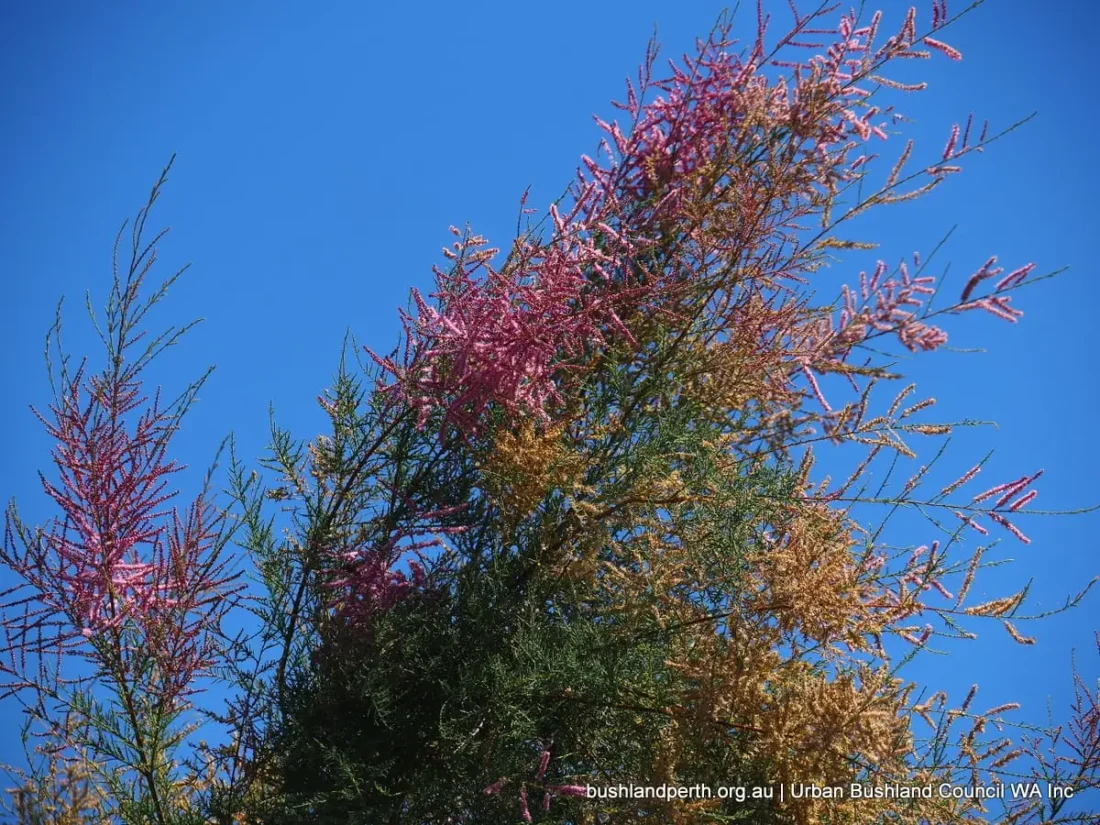
Ritual and Practical Applications
Throughout history, spiritual practitioners have incorporated the tamarisk into rituals and practical applications that honor its symbolic significance. In ancient Egyptian funerary rites, tamarisk branches were placed in tombs to invoke protection and resurrection. The tree’s wood was carved into amulets believed to carry the regenerative power associated with Osiris. These practices reflected the belief that the tamarisk contained essence that could transfer from the natural world to human experience through ritual engagement.
The tamarisk tree benefits extend beyond symbolism into practical healing applications. Traditional medicine across the Middle East utilized tamarisk bark, rich in tannins, as an astringent for treating wounds and digestive ailments. The tree’s leaves were brewed into teas believed to purify the blood and strengthen the spirit. These medicinal uses mirrored the tree’s spiritual symbolism—just as it purified salt from soil, it was believed to cleanse impurities from the body.
Contemporary spiritual practice can incorporate tamarisk symbolism through mindful meditation. One approach involves visualizing oneself as a tamarisk tree—roots reaching deep for spiritual nourishment, branches extending toward heaven, and the process of transforming life’s “salt” (difficulties) into growth. This visualization cultivates resilience and connection to both earth and divine realms.
A simple ritual honoring the tamarisk’s covenant symbolism involves planting any tree (or even a small plant if space is limited) while setting an intention or making a spiritual commitment. This act, echoing Abraham’s, creates a living reminder of our deepest values and promises. As we nurture the plant, we symbolically tend the covenant it represents. For those unable to plant physically, even keeping an image of a tamarisk can serve as a focal point for meditation on resilience and divine connection.
The Tamarisk and Eternal Life Symbolism
The tamarisk tree’s association with eternity emerges from both its biology and its spiritual contexts. Unlike deciduous trees that dramatically shed leaves, tamarisks maintain their feathery, evergreen-like appearance year-round in warmer climates. This visual constancy made them natural symbols of unchanging divine presence and eternal life. When Abraham planted his tamarisk while invoking “El Olam” (the Everlasting God), he created a perfect pairing of living symbol with theological concept.
In burial traditions, the tamarisk gained special significance. The biblical account of Saul’s bones being buried beneath the tamarisk tree at Jabesh wasn’t merely recording a location but acknowledging the tree’s association with passage between worlds. Ancient Near Eastern cultures believed that trees with deep roots and high branches could serve as conduits between underworld, earth, and heavenly realms. The tamarisk, with its extensive root system and lofty canopy, perfectly embodied this cosmic axis.
The tree’s extraordinary lifespan reinforced these associations. A single tamarisk might witness the passing of multiple human generations, making it seem to stand outside normal time. Combined with its ability to regenerate after being cut down (sending new growth from remaining roots), the tamarisk became a natural emblem of resurrection and continuity beyond physical death.
For contemporary spiritual seekers contemplating mortality, the tamarisk offers comforting symbolism. Like the tree that transforms barren landscapes into havens of life, our spiritual essence may transform the “deserts” of transition. The tamarisk reminds us that what appears as ending from one perspective may simultaneously be beginning from another—its seeds carried on wind to start new life elsewhere, just as spiritual traditions speak of the soul’s journey continuing beyond physical death.
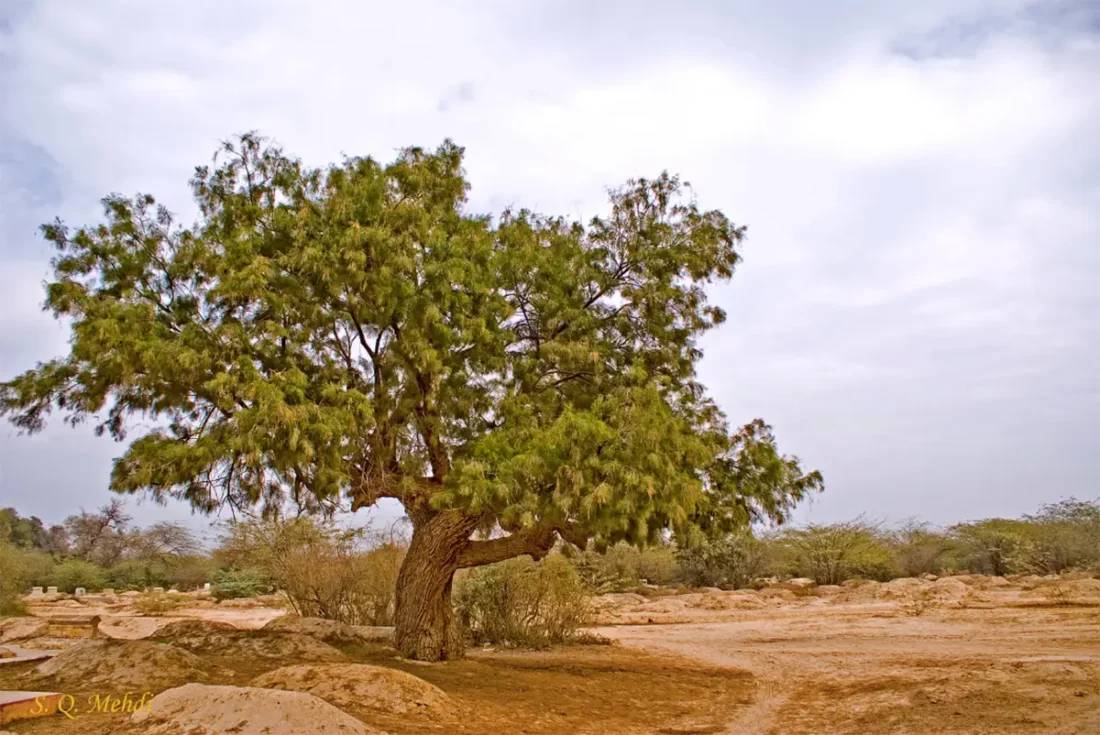
Modern Significance: The Tamarisk Tree Today
In our contemporary world, the tamarisk’s ancient symbolism retains remarkable relevance, though with nuanced understanding. Modern ecological research has revealed tamarisk species as both beneficial and problematic depending on context—native varieties support desert ecosystems while introduced species can become invasive in certain environments. This duality offers a spiritual metaphor for discernment—how qualities beneficial in one context may require careful management in another.
Current psychological research on nature connection resonates with the tamarisk’s traditional associations. Studies from Clemson University demonstrate that urban tree canopy correlates with reduced depression rates in residents, supporting ancient wisdom about trees as spiritual and psychological medicine. The practice of “forest bathing” (shinrin-yoku) shows measurable stress-reduction benefits from time spent among trees, validating traditional views of trees like the tamarisk as sanctuaries for human wellbeing.
Environmental stewardship takes on spiritual dimensions through the tamarisk lens. The tree’s remarkable ability to rehabilitate saline soils inspires contemporary restoration projects. For modern spiritual practitioners, supporting such ecological healing work becomes a form of honoring the tamarisk’s ancient symbolism of covenant care for creation.
Interfaith dialogue finds common ground in shared reverence for trees like the tamarisk. While theological frameworks differ, Jews, Christians, Muslims, and practitioners of nature-based spiritualities can recognize in this resilient tree a shared language of endurance, sanctuary, and transformation. In divided times, such common reverence offers paths toward mutual understanding. The tamarisk that once marked Abraham’s covenant continues to invite diverse spiritual seekers into conversation about our shared responsibility to each other and to the living world.
Personal Reflection: Finding Your Tamarisk
Each of us faces spiritual deserts—times of aridity, challenge, or seeming abandonment. The tamarisk invites us to consider how we might plant symbolic stakes of faith in these barren periods. What commitments might we establish that, like Abraham’s tree, become living testimonies to our deepest values? These need not be grandiose gestures—even small, consistent practices can grow into powerful anchors during difficult passages.
Consider areas of your life that feel particularly harsh or depleted. The tamarisk thrives precisely where other life surrenders. What quality of resilience might you cultivate in challenging relationships, work environments, or internal struggles? Like the tamarisk extracting salt, how might you transform what seems poisonous into purification? This tree teaches that our most difficult circumstances often become the ground for our most significant spiritual growth.
The creation of sacred space deserves consideration in our often-fragmented modern lives. Where is your Beersheba—the place you return to for spiritual centering? It need not be elaborate or even physical; it might be a consistent time of day, a meditation practice, or even a mental sanctuary you’ve cultivated. The tamarisk reminds us that sacred space isn’t found only in temples or churches but can be established wherever we intentionally open to divine presence.
Finally, consider the legacy dimension of Abraham’s tamarisk. What are you planting that will continue offering shade and sanctuary beyond your lifetime? This might involve literal trees, creative works, relationships nurtured, wisdom shared, or communities strengthened. The tamarisk’s extended lifespan reminds us to think beyond immediate gratification toward contributions that will continue bearing fruit for generations to come.
Conclusion
The tamarisk tree stands as a living parable, its branches reaching across millennia to offer timeless wisdom about resilience, covenant, and sacred space. From Abraham’s significant planting at Beersheba to the burial of Saul beneath the tamarisk at Jabesh, this remarkable tree has marked moments where heaven and earth meet, where promises are made and honored, and where sanctuary is found in the harshest landscapes.
Across diverse spiritual traditions—Hebrew, Egyptian, Greek, Islamic, and Hindu—the tamarisk emerges with consistent symbolic power. Its ability to thrive where other life falters speaks to the human capacity for spiritual endurance. Its extraction of salt from soil demonstrates transformation of challenge into growth. Its creation of shade in desert heat reveals how we might become sources of refuge and renewal for others.
In our contemporary world, with its own forms of aridity and salt, the tamarisk’s ancient symbolism remains powerfully relevant. Modern research confirming trees’ benefits for psychological wellbeing and ecological health simply validates what spiritual traditions have long recognized—that these living beings serve as conduits of divine presence and healing.
Perhaps most significantly, the tamarisk invites us to consider what we are planting in our own lives—what covenants we establish, what sanctuaries we create, and what legacies we nurture. Like Abraham calling on “El Olam” beneath his tamarisk, we too might find that our deepest spiritual connections are made tangible through living symbols that continue to grow, offering shade and sanctuary long after we have moved on.
FAQ
What is the meaning of tamarisk tree in Hebrew?
In Hebrew, the tamarisk tree is called “eshel” (אשל), which rabbinical tradition suggests may be an acronym for food (ochel), drink (shtiyah), and lodging (linah)—symbolizing hospitality. The tree represents covenant, divine promises, and creating sacred space where heaven and earth meet. Abraham’s planting of the eshel marked both physical territory and spiritual dedication.
What are tamarisk tree fruits like?
Tamarisk trees produce small capsule-like fruits containing tiny seeds with feathery, hair-like structures that aid wind dispersal. The fruits themselves are not typically consumed by humans but provide food for wildlife. In spiritual symbolism, these wind-carried seeds represent how divine covenant spreads across generations and landscapes, extending far beyond their origin point.
What are the tamarisk tree benefits?
Tamarisk trees offer numerous benefits: they provide shade in desert environments, stabilize soil with their extensive root systems, and can extract salt from soil, improving land quality. Traditionally, their bark and leaves were used medicinally for treating wounds, digestive issues, and as an astringent. Spiritually, they symbolize resilience, divine protection, and creating sanctuary in harsh conditions.
What is special about a tamarisk tree?
The tamarisk tree’s remarkable specialness lies in its extraordinary adaptability to harsh conditions. It can extract salt from soil through specialized glands, survive extreme drought with minimal water, and create microhabitats of shade and humidity in desert environments. These qualities made it spiritually significant as a symbol of divine provision in unlikely places and resilience through adversity.
Where can I find tamarisk tree photos?
High-quality tamarisk tree photos can be found in botanical databases like Plants of the Bible (by Michael Zohary), nature photography collections featuring Middle Eastern flora, and botanical garden websites. For spiritual context, religious art collections often include depictions of Abraham’s tamarisk at Beersheba. The Israel Nature and Parks Authority also maintains visual archives of native tamarisk species.
How long is the tamarisk tree lifespan?
The tamarisk tree can live for decades to centuries, with some specimens reaching 150 years or more in favorable conditions. This exceptional longevity contributed to its spiritual symbolism of eternal promises and divine covenant. The tree’s ability to regenerate from its root system after being cut down further enhanced its association with continuity and resurrection across multiple spiritual traditions.
What is the significance of the tamarisk tree at Jabesh?
The tamarisk tree at Jabesh gained significance as the burial site for King Saul’s remains (1 Samuel 31:13). This choice reflected the tree’s status as a marker of sacred space and transition between worlds. The tamarisk, with its deep roots and high branches, symbolically connected the underworld, earth, and heaven, making it an appropriate sentinel for burial sites and places of remembrance.
Why did Abraham plant a tamarisk tree?
Abraham planted a tamarisk tree at Beersheba (Genesis 21:33) as a living symbol of his covenant with God. This act represented establishing permanent sacred space after years of nomadic wandering. By choosing a long-lived tree that creates shade in desert conditions, Abraham created both physical sanctuary and spiritual monument—a place where he “called upon the name of the Lord, the Everlasting God.”
Sources
- biblehub.com – Symbolism of the Tamarisk Tree
- biblechat.ai – Significance of Tamarisk Tree in Genesis 21:33
- iritdulman.com – Tamarisk/Tamarix
- jewishduluth.org – Planting an Eshel
- study.com – The Egyptian God Osiris: Facts & Symbol
- news.clemson.edu – Scientists Link Urban Tree Structure to Mental Health
